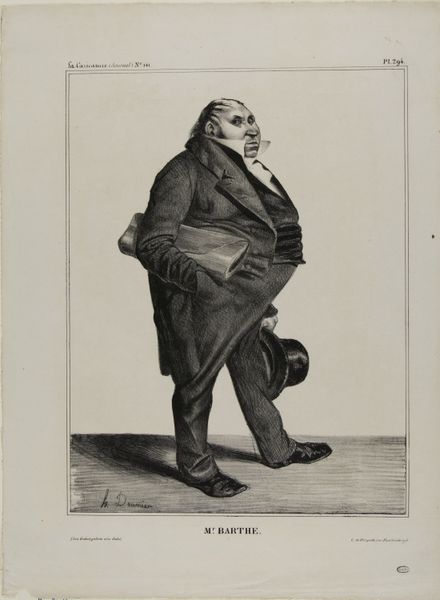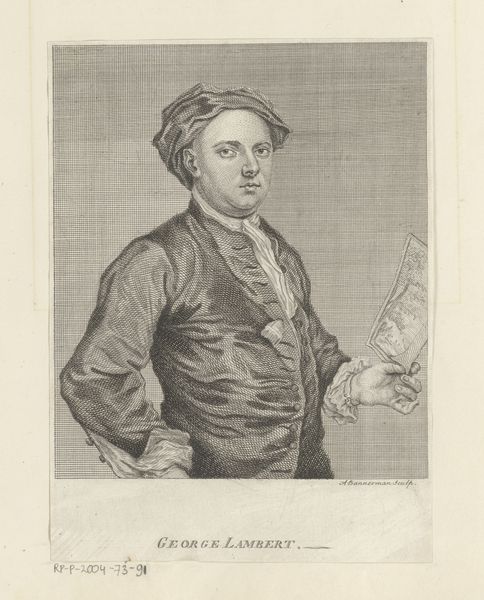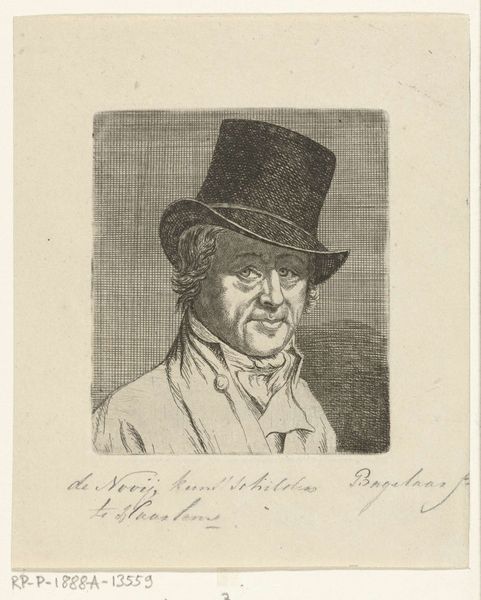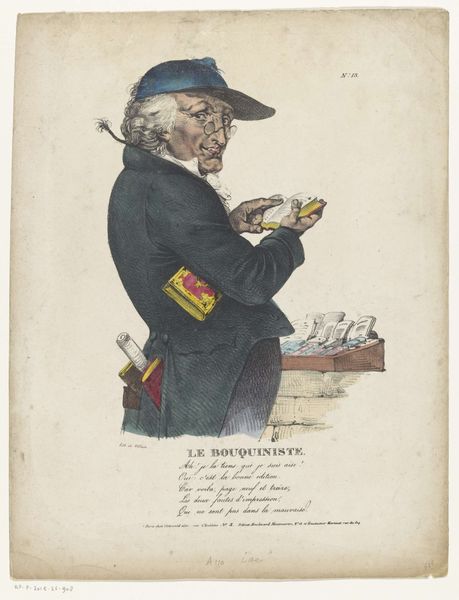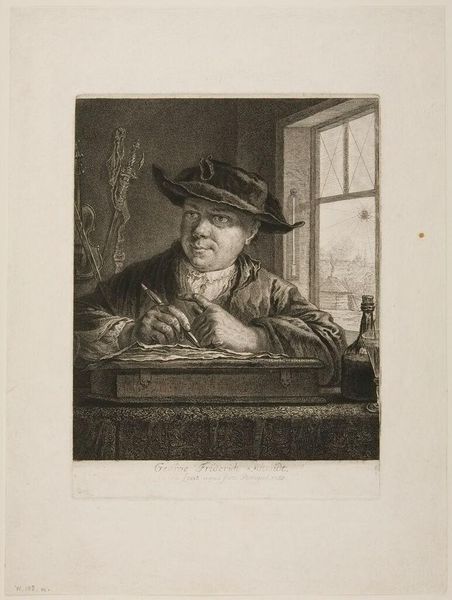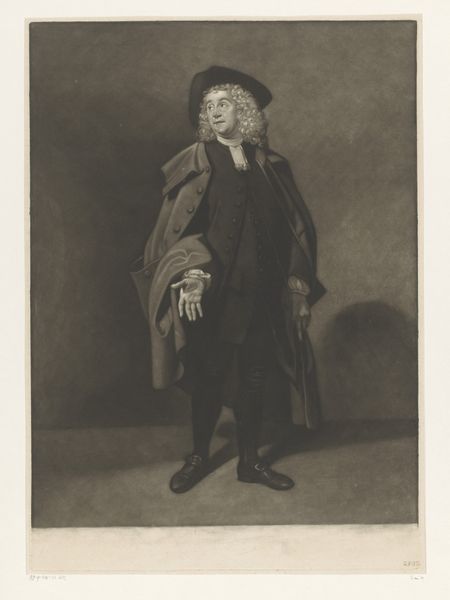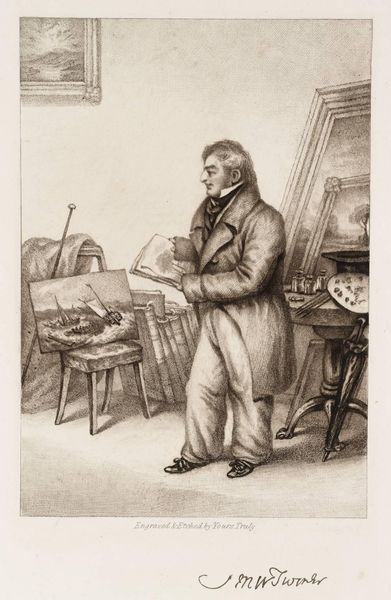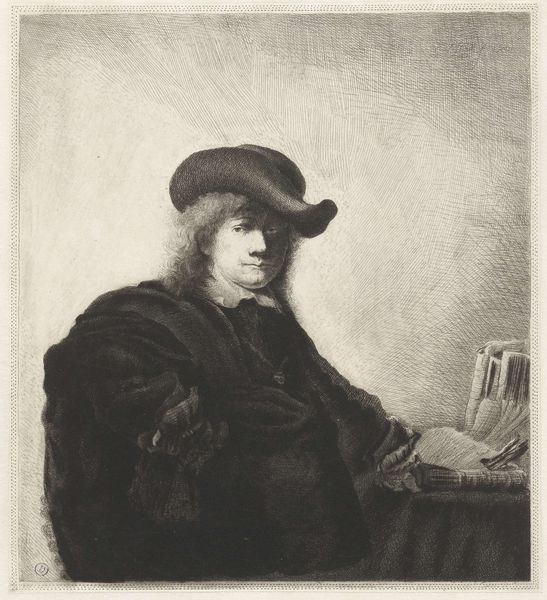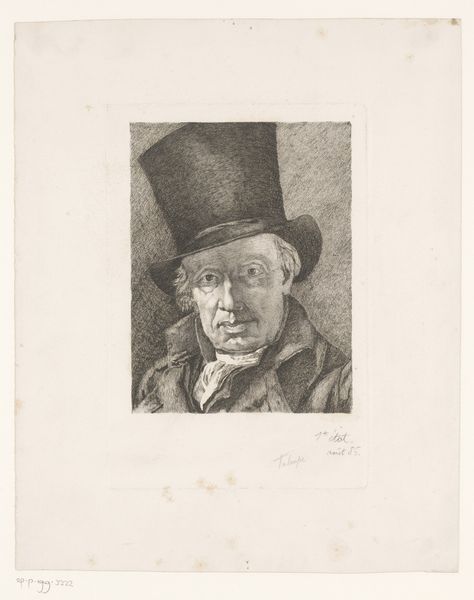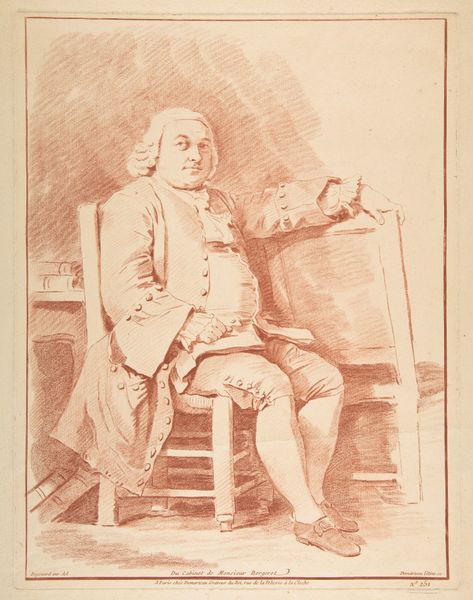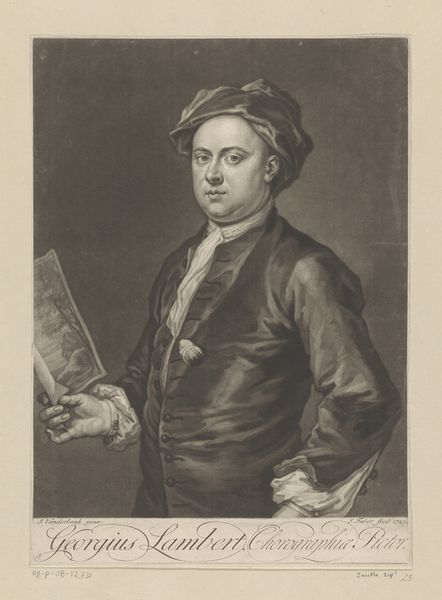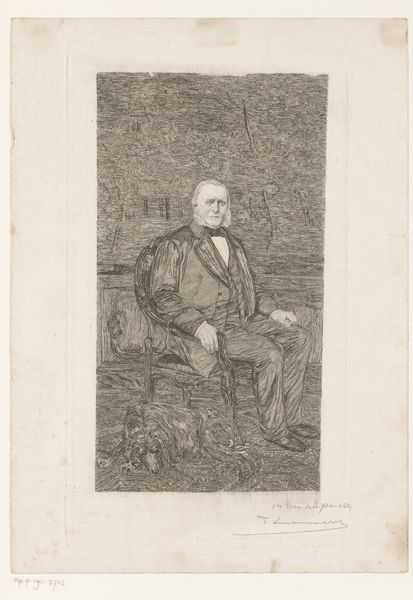
Dimensions: height 308 mm, width 260 mm
Copyright: Rijks Museum: Open Domain
Curator: Let's examine this etching by John Greenwood; it's titled "Portret van Klaas Verlaan" and dates from between 1739 and 1792. What strikes you initially? Editor: A somewhat subdued mood. The limited tonal range creates an atmosphere of quiet contemplation, even introspection. The sitter seems…world-weary? Curator: It is indeed an understated use of line and tone. Note the precise hatching and cross-hatching employed to build form. See how Greenwood defines Verlaan’s features and clothing, relying on subtle gradations to convey depth. Editor: And I can't help but notice the contrast between the sitter and the implied wealth that the context of a commissioned portrait and the cityscape background communicate. I mean, a pipe was not a sign of working-class identity in this era! The etching gives me pause. The image feels almost subversive. It complicates simplistic notions of status and power that so often color artistic representation of that period. Curator: Subversive perhaps in its lack of overt grandeur. Instead of idealizing his subject, Greenwood seems focused on capturing his character and likeness, imbuing a particular quality to the lines and rendering of surfaces. Editor: Right, consider the inscription at the bottom – difficult to read without close examination, but presumably offering some narrative context or encomium related to Klaas Verlaan's profession or status. And what of that detail glimpsed outside the window, maybe suggestive of trade routes, linking Verlaan, even if obliquely, to mercantile endeavors and to the dynamics of colonial exchange? Curator: It draws our eye to the symbolic world beyond the individual. It could imply prosperity or maritime industry; there are multiple readings we can make about the window itself and what the outside view signifies, just as there are numerous ways to look at the relationship of form to meaning in this work. Editor: True. By layering interpretations and appreciating both the aesthetics and socio-political undertones, we find more than just a portrait. It is really a study of how representation both obscures and reveals truths about identity and social strata.
Comments
No comments
Be the first to comment and join the conversation on the ultimate creative platform.
